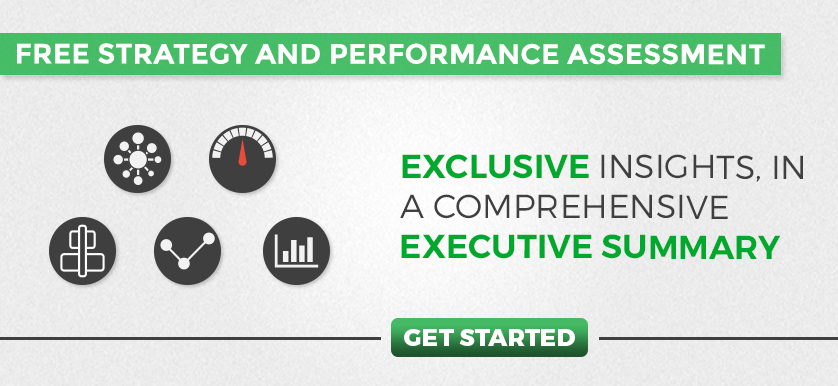The Employee Performance Management Playbook: Aligning Goals, KPIs, and Growth

Image Source – Freepik
Effective employee performance management is about guiding future growth and aligning individual contributions with the company’s strategic vision. Clear and well-defined objectives are a fundamental aspect of this process. They provide essential clarity and focus, drive accountability, and boost motivation. Furthermore, they enable optimal resource allocation, align individual efforts with business goals, and facilitate meaningful professional development.
From Objectives to Outcomes: The Role of KPIs
Building on the importance of clear objectives, key performance indicators (KPIs) are measurable metrics used to evaluate the progress of a project or initiative toward those defined objectives. For KPIs to be effective, they must be quantifiable, directly relevant to organizational goals, and provide actionable insights to guide decision-making. Essentially, KPIs allow us to measure the success of our objectives and ensure we are on track to achieve our goals.
KPIs can be grouped into several categories based on their purpose and measurement approach:
By Time Horizon
- Short-term indicators track immediate goals (e.g., # Daily passengers).
- Long-term indicators measure strategic objectives (e.g., $ Customer Lifetime Value).
By Measurement Type
- Qualitative indicators assess intangible factors (e.g., # Net Promoter Score).
- Quantitative indicators use numerical data (e.g., $ Operating profit).
By Organizational Level
- High-level indicators reflect overall business performance (e.g., % Market share).
- Low-level indicators gauge team or individual progress (e.g.,# Overtime hours per employee).
Read More >> Magnifying Microcultures: When Employees Follow Peers, Not Companies
Other Key Categories
- Dependent indicators rely on other KPIs (e.g., $ Customer acquisition cost).
- Independent indicators are standalone metrics (e.g., % On-time delivery ).
- Cost indicators evaluate resource efficiency (e.g.,$ Cost of training per year).
- Time indicators measure process duration (e.g., # Time to rectify defects ).
- Productivity indicators assess operational efficiency (e.g., % Overdue project tasks).
- Quality indicators monitor output standards (e.g.,# Deficiencies per inspection).
- External indicators track market-facing success (e.g., % Brand awareness ).
- Internal indicators focus on operational performance (e.g., # Hours absent per employee ).
These categories help organizations select the right KPIs for different business needs and ensure a comprehensive view of performance.
Creating Effective KPIs for Performance Improvement
While the categorization of KPIs provides a framework for selection, effective KPIs are not simply chosen at random; they must be strategically aligned, measurable, and actionable. The following steps ensure the KPIs you choose drive meaningful performance:
- Align with Strategic Goals: KPIs should directly support organizational objectives, whether financial, operational, or customer-focused. For example, if expanding market share is a priority, track metrics like % Customer acquisition, % Sales growth, or % Sales growth by market segment.
- Apply the SMART Framework:
- Specific: Clearly defined.
- Measurable: Quantifiable with reliable data sources.
- Attainable: Ambitious yet realistic.
- Relevant: Tied to critical business outcomes.
- Time-Bound: Include deadlines for accountability.
- Prioritize Quality Over Quantity: Limit KPIs to 2–3 per goal to maintain focus. Balance leading indicators (predictive metrics like employee engagement) and lagging indicators (outcome metrics like $ Revenue per client (RevPEC).
- Clarify Ownership and Methodology: Define how each KPI is calculated, its data sources, and targets. Assign ownership to teams or individuals to ensure accountability.
- Review and Adapt: Regularly assess KPI relevance amid changing business conditions. Use feedback loops and analytics tools (e.g., Power BI) to refine metrics and drive continuous improvement.
KPIs in Action: Industry-Specific Examples
Specific and detailed KPIs should be used for each industry to provide a more holistic perspective on employee performance management. To illustrate how these KPIs are applied in practice, let’s take a look at the following examples used across various industries:
- Marketing: Track campaign performance through click-through rates (CTR), conversion metrics, and return on investment (ROI) to assess an employee’s impact on lead generation (e.g., % Brand awareness).
- Sales: Measure individual contributions using new accounts secured, deal closure rates, and average contract value (e.g., $ Sales by department).
- Technology: Evaluate project efficiency with budget adherence, task completion rates, and sprint velocity in Agile teams. (e.g., % Application consolidation rate).
- Healthcare: Patient satisfaction scores and peer reviews assess care quality and teamwork (e.g.,# Patient Satisfaction Score).
- Supply Chain, Procurement & Distribution: Assess operational efficiency through on-time delivery rates, procurement accuracy, and cost optimization (e.g., % Purchases on time and within budget).
- Human Resources: Employee engagement scores and training feedback measure workplace culture and development success (e.g., # Performance appraisal rating)
- Customer Service: Monitor interactions per employee, resolution times, and customer retention metrics (e.g., % Key customer satisfaction)
Tools for Tracking KPIs
After establishing effective KPIs, the next step is to select the appropriate tools for tracking them. The most effective solutions fall into several key categories:
- Dashboard and visualization tools like Microsoft Power BI and Tableau can transform raw data into actionable insights through interactive reports and real-time analytics.
- For strategic performance management, dedicated OKR platforms and balanced scorecard (BSC) systems help align departmental KPIs with overarching business objectives. HR information systems similarly bridge employee performance metrics with organizational goals.
- Operational KPI tracking often relies on project management solutions, such as Asana, Jira, or Monday.com.
- For organizations seeking simpler solutions, spreadsheet-based tools (Excel, Google Sheets, Smartsheet) offer flexible yet more involved approaches to KPI monitoring.
Connecting Individual Goals, KPIs, and Company Targets
It is important to emphasize that the examples above illustrate how KPIs can be tailored to various roles and industries. However, their true power lies in their ability to connect individual employee goals with broader company targets. This alignment ensures that each employee’s efforts directly contribute to the organization’s strategic objectives.
For instance, if a company aims to increase its market share, this high-level goal might translate to a sales department’s objective to acquire a certain number of new customers. Individual sales representatives would then have KPIs such as # New accounts secured per month and % Deal closure rate, which directly contribute to the departmental and company-wide goals.
This connection between individual, departmental, and organizational goals ensures that employees understand the importance of their work and are motivated to achieve their targets. It also enables managers to track performance effectively, identify areas for improvement, and provide targeted feedback and development opportunities.
Read More >> Everything You Need To Know About KPI Selection
The Impact of KPIs on Employee Performance Management
Extensive research demonstrates the significant role of KPIs in enhancing employee and organizational performance. A study published in the International Journal of Economics and Management Studies confirms that KPIs have a strong positive impact on employee performance management. Similarly, research featured in Emerald Insight highlights the dual benefits of KPIs, showing they both drive workplace performance and establish measurable benchmarks for objective employee evaluation.
Another study reinforces these findings, demonstrating that well-designed KPIs optimize productivity by clarifying expectations through defined goals, motivating employees with tangible targets, and enabling data-driven progress tracking. They also strengthen accountability across teams, support fair performance evaluations, and drive continuous improvement initiatives.
Collectively, these research studies underscore KPIs as powerful tools for employee performance management.

Tags: employee performance management, EPM, KPI




